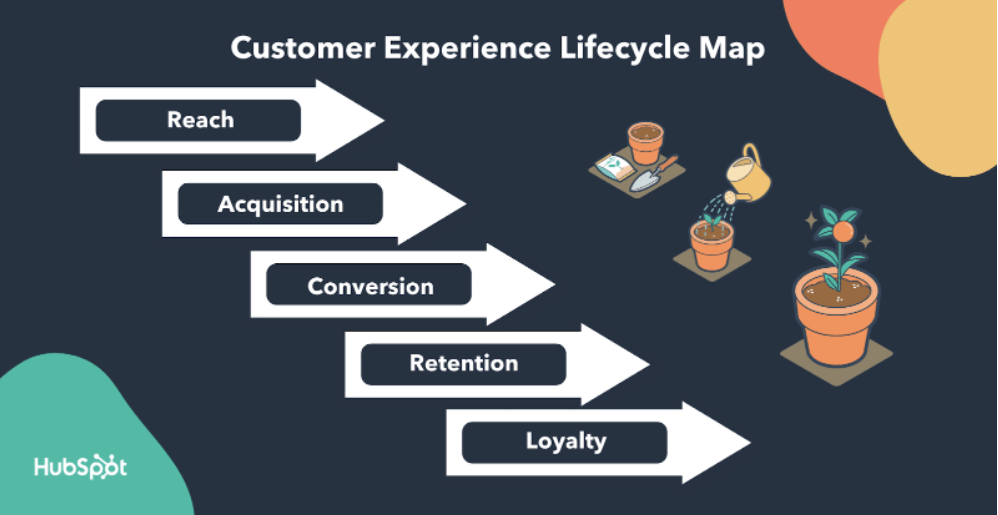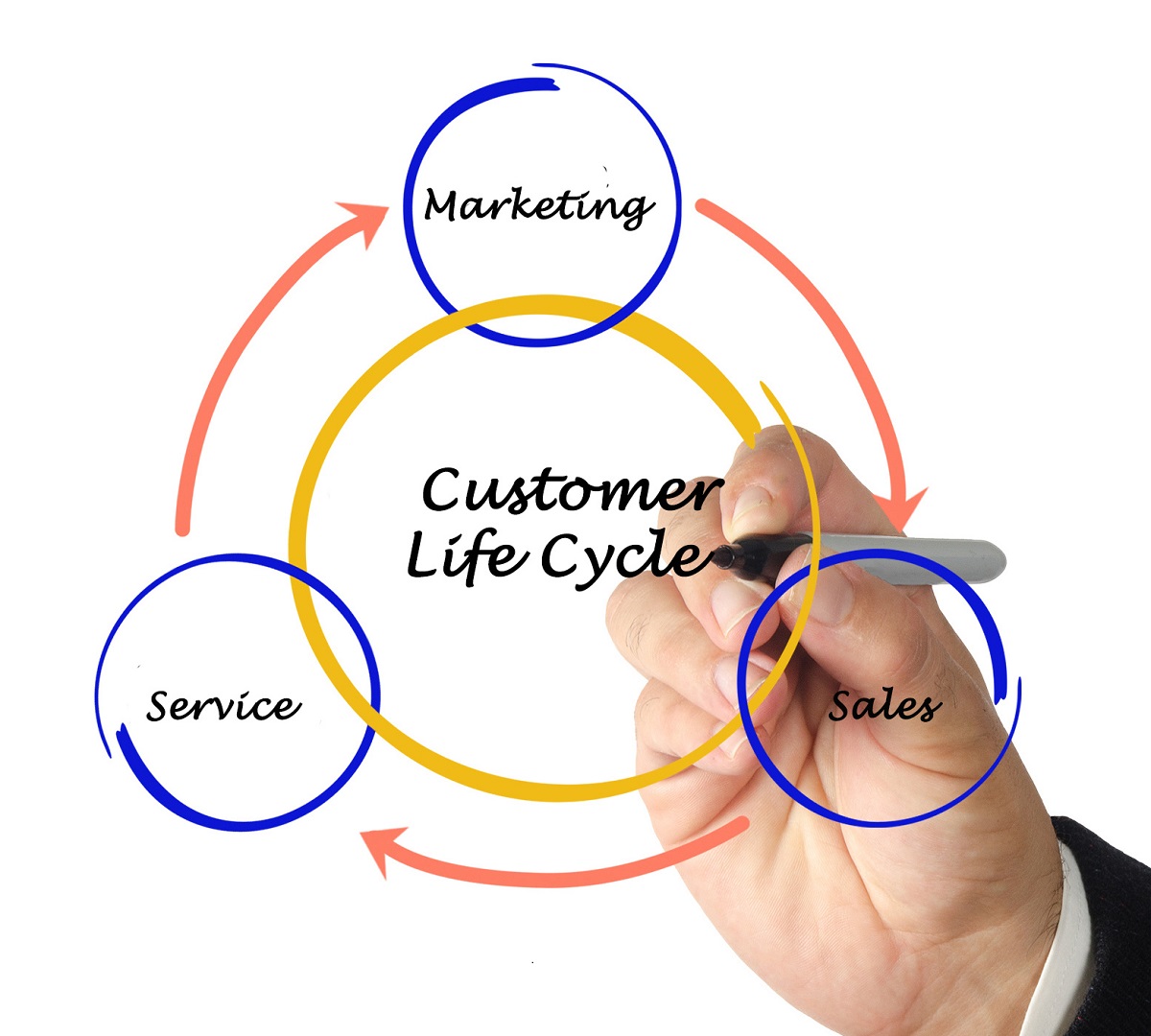The 2022 Marketer’s Guide to Customer Lifecycle
Your customers are more valuable than a single sale. Every consumer that interacts with your business has the potential to become a loyal customer who makes repeat purchases. They might even become a faithful brand advocate. However, turning a consumer into a lead and converting them into loyal customers starts with understanding the customer lifecycle.
Explore the five stages of the customer lifecycle and how you can retain more loyal customers.
Key Takeaways:
- A customer lifecycle gives a broad picture of a customer’s journey from discovery through advocacy
- Tracking your customer’s lifecycle allows you to fully understand each consumer and offer a personalized sales approach
- The five stages of the customer lifecycle are: reach, acquisition, conversion, retention, and loyalty
What Is Customer Lifecycle?
A customer lifecycle is the interactions a customer has leading to finding your brand, converting to a customer, and remaining loyal to your business. It offers a big picture of how customers interact with companies and what steps all customers go through before purchasing a product.
A customer lifecycle is a broader approach than a customer journey, which focuses on specific steps in an individual customer’s lifecycle. It is also different than the customer funnel, which only moves customers in one direction in their buyer’s journey with the sole focus of making a sale. However, a customer lifecycle aims to build relationships with customers.
Understanding the customer lifecycle is vital to creating a comprehensive picture of who consumers are before they find your brand and how to retain loyal customers.

The Benefits of Tracking a Customer’s Lifecycle
Here are three specific benefits of using your customer lifecycle journey in marketing strategies.
Helps You Understand Your Customers
Understanding your customer’s lifecycle provides insights into motivating factors that might change a consumer’s behavior. These insights will guide your marketing efforts so you can create content that addresses customers at each point in their lifecycle and address factors that might prevent them from purchasing.
Shows Your Customer Lifetime Value
For your marketing efforts to be worth the investment, you will want a customer to bring in more revenue than you spent to attract them. However, simply calculating a single purchase doesn’t accurately reflect how much a customer brings to your company.
About 82% of businesses say that retaining loyal customers is more cost-efficient than acquiring new customers. You can use your customer lifetime value to track what you invested in acquiring each customer and what revenue they brought in through their time as a customer, including new customers they might have referred.

Increases Your Customer Satisfaction Rate
Over 68% of customers will spend more at a business that offers a positive customer experience. You can use customer lifecycle insights to create a personalized experience. For example, you can suggest products relevant to a customer’s specific stage in their lifecycle to increase the chance of a conversion.
5 Stages of Customer Lifecycle (And How to Market for Each Step)
Explore the five stages of the customer lifecycle and actionable strategies for improving your marketing in those areas.
Stage 1: Reach
The first step a customer takes is discovering your brand. However, this stage might take longer if they aren’t even aware of a need. This is a critical time for your marketing team to reach those customers since they haven’t found your business yet.
How to Reach Customers
A strong reach strategy uses outbound and inbound marketing efforts to create a demand for your product and raise awareness about your brand. These strategies are essential for getting your name in front of your ideal audience while they are first learning they have a challenge they need to solve.
Stage 2: Acquisition
The acquisition stage begins when a consumer turns into a lead. This can occur when they reach out to your company, fill in an online form, follow you on social media, or respond to your marketing efforts. When they take these actions, they are expressing interest in your business.
Unfortunately, the average conversion rate is only 2.35%, with even the top companies only seeing a conversion rate of 11.45%. That leaves over 90% of leads that never buy from your brand.
The acquisition stage is your chance to capture those leads and nurture them to increase the likelihood of purchasing from you.
How to Nurture Leads
Once a consumer expresses interest in your company, your marketing team’s job is to answer their questions and remove any roadblocks. You can perform these tasks through email campaigns, phone calls, connecting over social media, and relevant content on your website.
For example, a frequently asked questions page is an effective way to answer common questions leads ask when deciding whether to choose your brand over your competitors.
Stage 3: Conversion
Once you qualify a lead and move from marketing to sales, they also move to the conversion stage of their lifecycle. In this step, they have all the essential information for purchasing. However, they still need a little more encouragement to press “buy.”
How to Convert Leads
Make conversion simple. When you create content, landing pages, or ads dedicated to this stage, also include a clear call to action. These are simple phrases at the end of your content that provides the next step in the buyer’s journey. Most often, that step is purchasing a specific product.
Stage 4: Retention
A customer lifecycle strategy doesn’t end with a single purchase. If you want to retain a loyal customer base, your marketing and sales efforts must go beyond that initial purchase.
Your retention strategies are how you create a positive customer experience. You want to ensure customers enjoy purchasing your product and get the most use out of that product. When they are happy with your service and product, they are more apt to return. This also increases your opportunities for upselling or cross-selling products.
How to Retain Customers
Provide support for your customers after they purchase a product for remaining happy with your brand. After their initial purchase, you can also request feedback on how they felt about their experience. This feedback allows you to address any issues while learning what customers respond well to in your sales strategies.
Stage 5: Loyalty
The most loyal customers eventually become brand advocates. This is the ultimate goal of any modern marketing technique. About 93% of millennials rely on online reviews when making a purchasing decision, and 50% of customers will act after reading a review.
A brand advocate is a loyal customer who promotes your company and products to others. This might occur through their social media account, word of mouth, or online reviews.
How to Encourage Loyalty
Continue to reward your customers so they remain loyal to your brand. Some ways to reward them include offering exclusive promotions and discounts, recognizing special occasions, including them in your marketing content, and requesting feedback after interactions with the customer.
Use Customer Lifecycle Marketing to Build Positive Customer Relationships
Do you fully understand your customer’s lifecycle?
Televerde can help you use essential insights into your customer lifecycle to create relevant and timely marketing strategies to reach every customer, from the discovery through the loyalty stage.
Contact us to learn more about our customer lifecycle management solutions.



